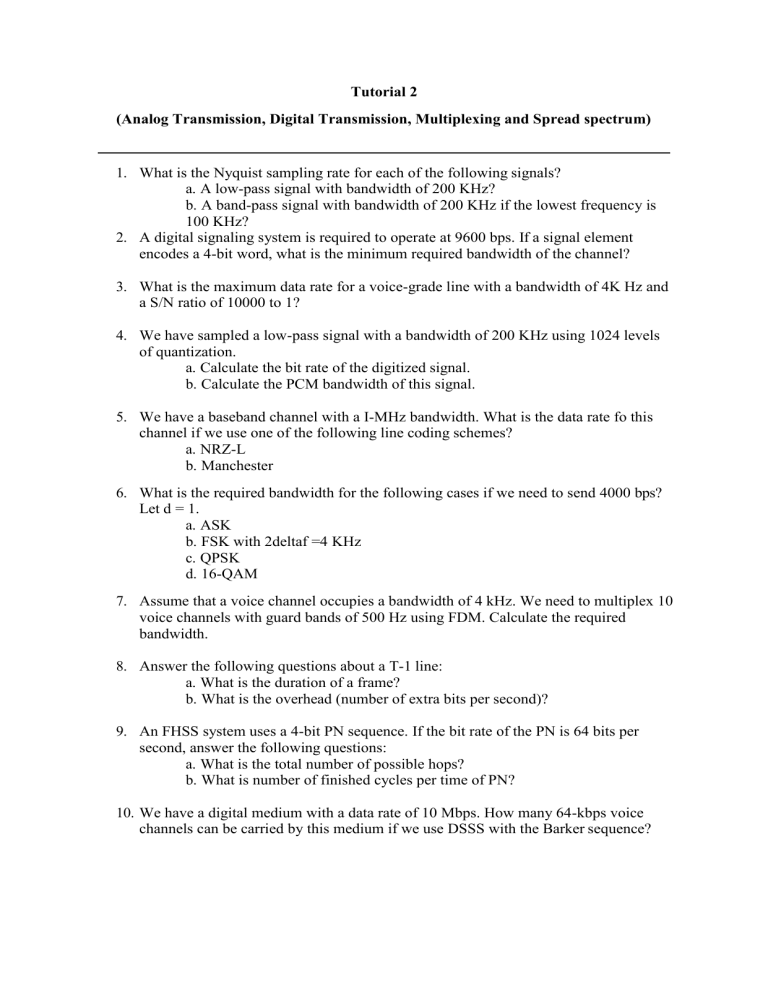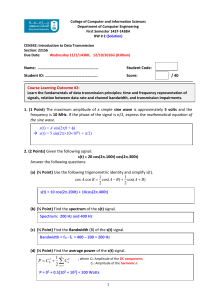
Tutorial 2 (Analog Transmission, Digital Transmission, Multiplexing and Spread spectrum) 1. What is the Nyquist sampling rate for each of the following signals? a. A low-pass signal with bandwidth of 200 KHz? b. A band-pass signal with bandwidth of 200 KHz if the lowest frequency is 100 KHz? 2. A digital signaling system is required to operate at 9600 bps. If a signal element encodes a 4-bit word, what is the minimum required bandwidth of the channel? 3. What is the maximum data rate for a voice-grade line with a bandwidth of 4K Hz and a S/N ratio of 10000 to 1? 4. We have sampled a low-pass signal with a bandwidth of 200 KHz using 1024 levels of quantization. a. Calculate the bit rate of the digitized signal. b. Calculate the PCM bandwidth of this signal. 5. We have a baseband channel with a I-MHz bandwidth. What is the data rate fo this channel if we use one of the following line coding schemes? a. NRZ-L b. Manchester 6. What is the required bandwidth for the following cases if we need to send 4000 bps? Let d = 1. a. ASK b. FSK with 2deltaf =4 KHz c. QPSK d. 16-QAM 7. Assume that a voice channel occupies a bandwidth of 4 kHz. We need to multiplex 10 voice channels with guard bands of 500 Hz using FDM. Calculate the required bandwidth. 8. Answer the following questions about a T-1 line: a. What is the duration of a frame? b. What is the overhead (number of extra bits per second)? 9. An FHSS system uses a 4-bit PN sequence. If the bit rate of the PN is 64 bits per second, answer the following questions: a. What is the total number of possible hops? b. What is number of finished cycles per time of PN? 10. We have a digital medium with a data rate of 10 Mbps. How many 64-kbps voice channels can be carried by this medium if we use DSSS with the Barker sequence?





